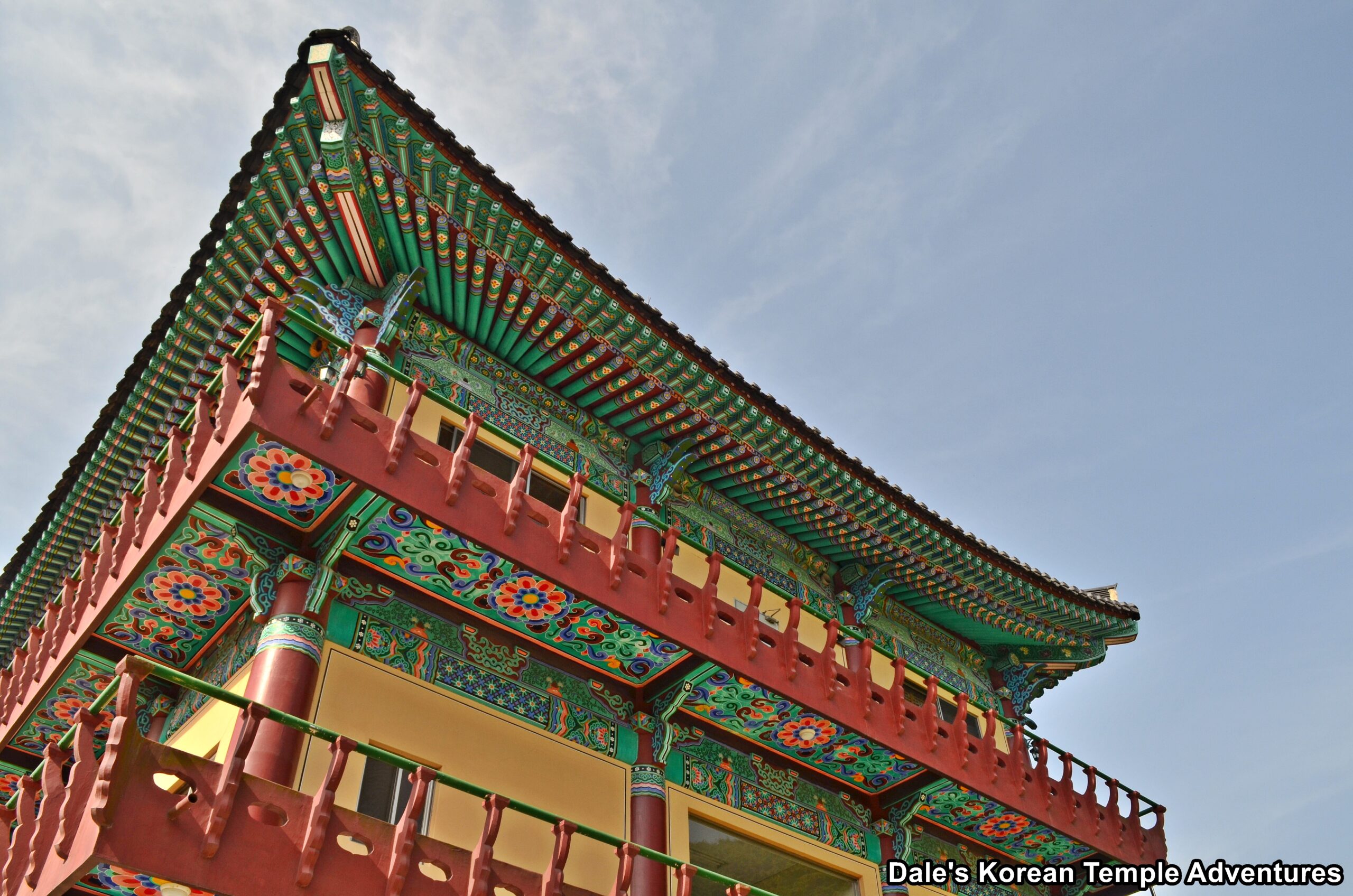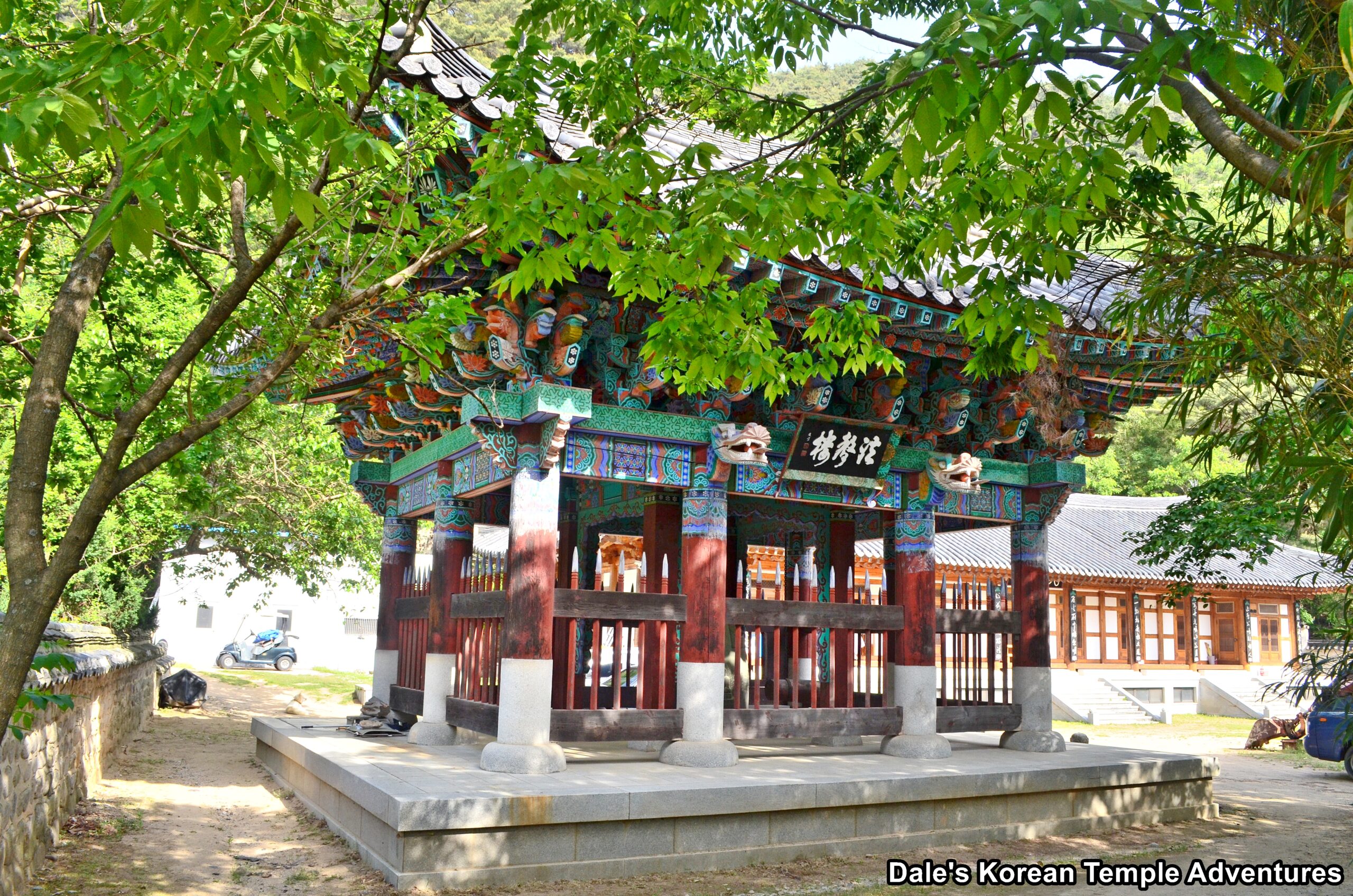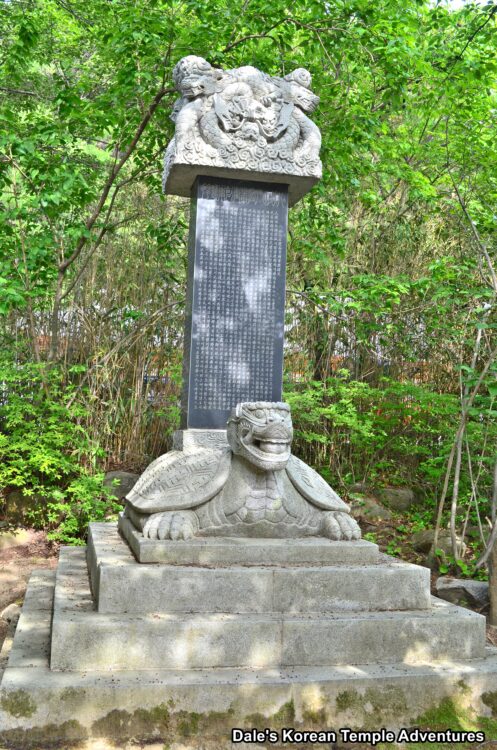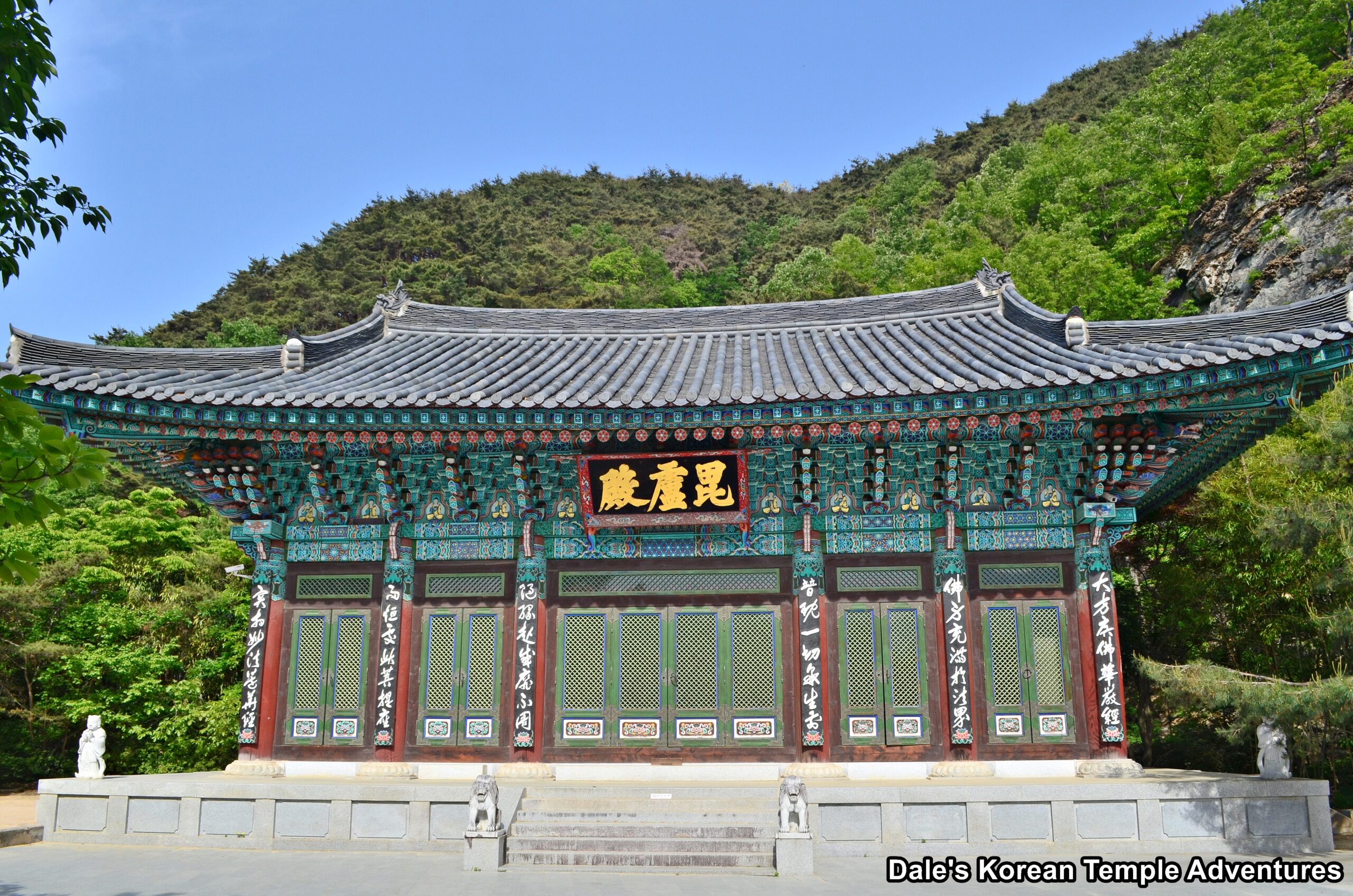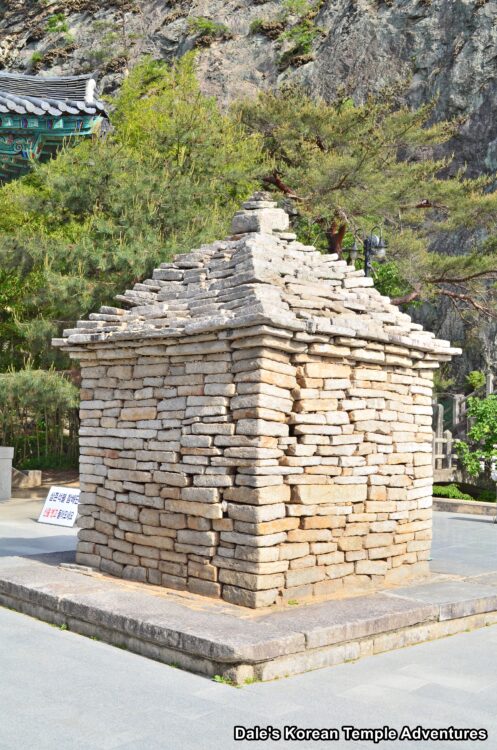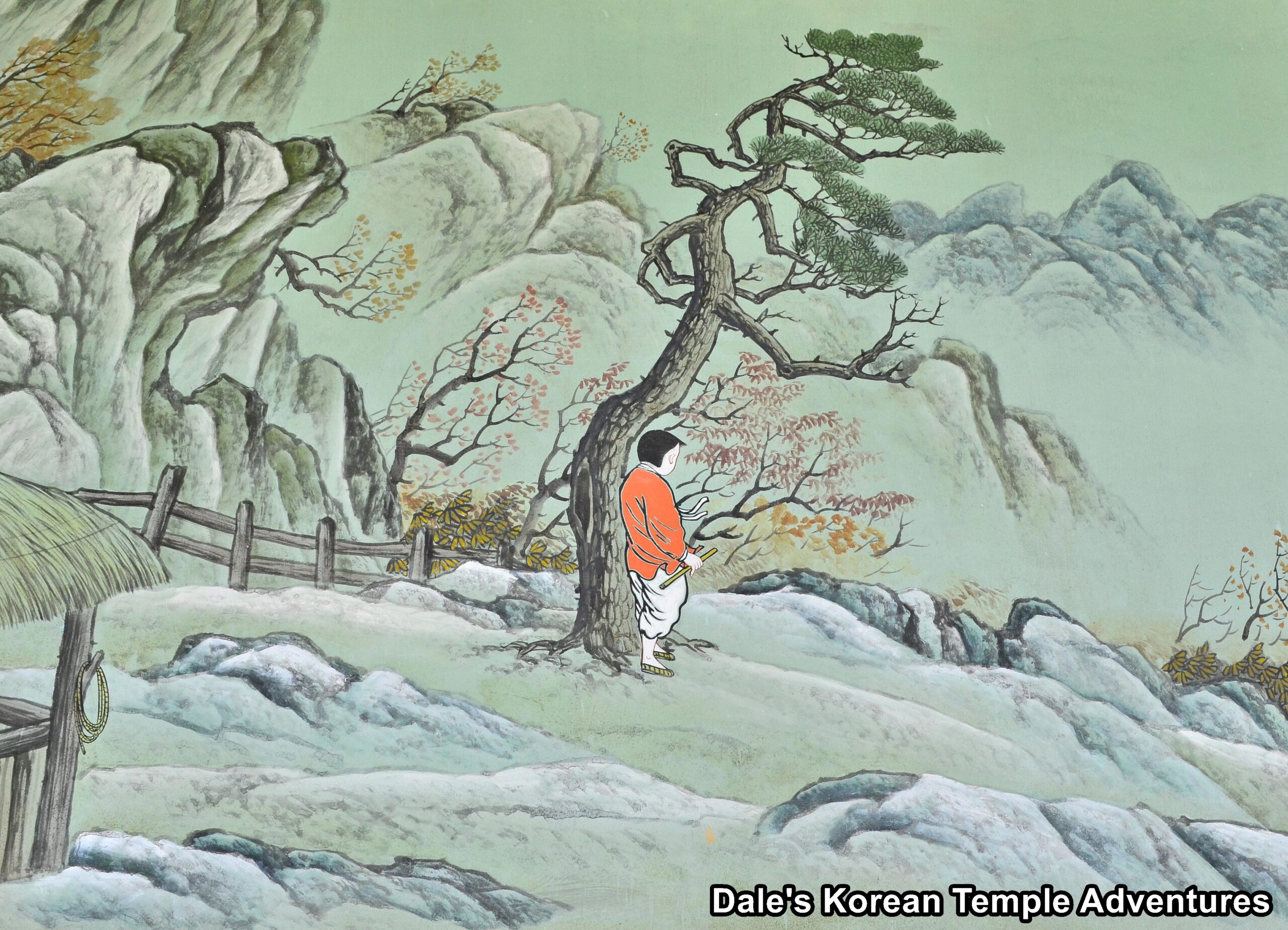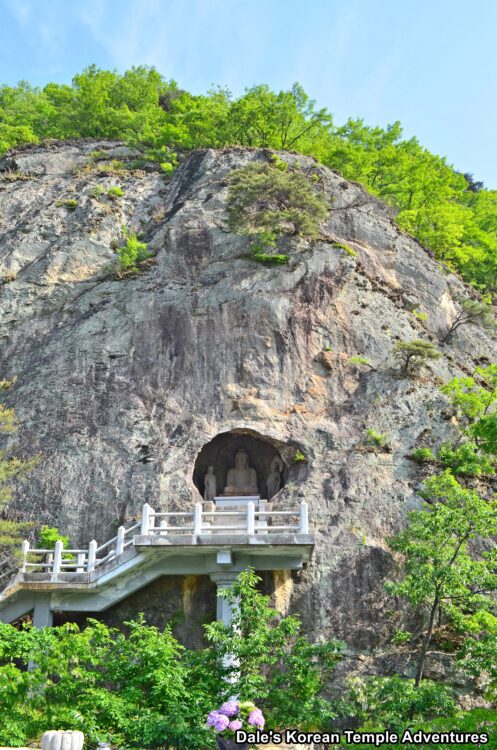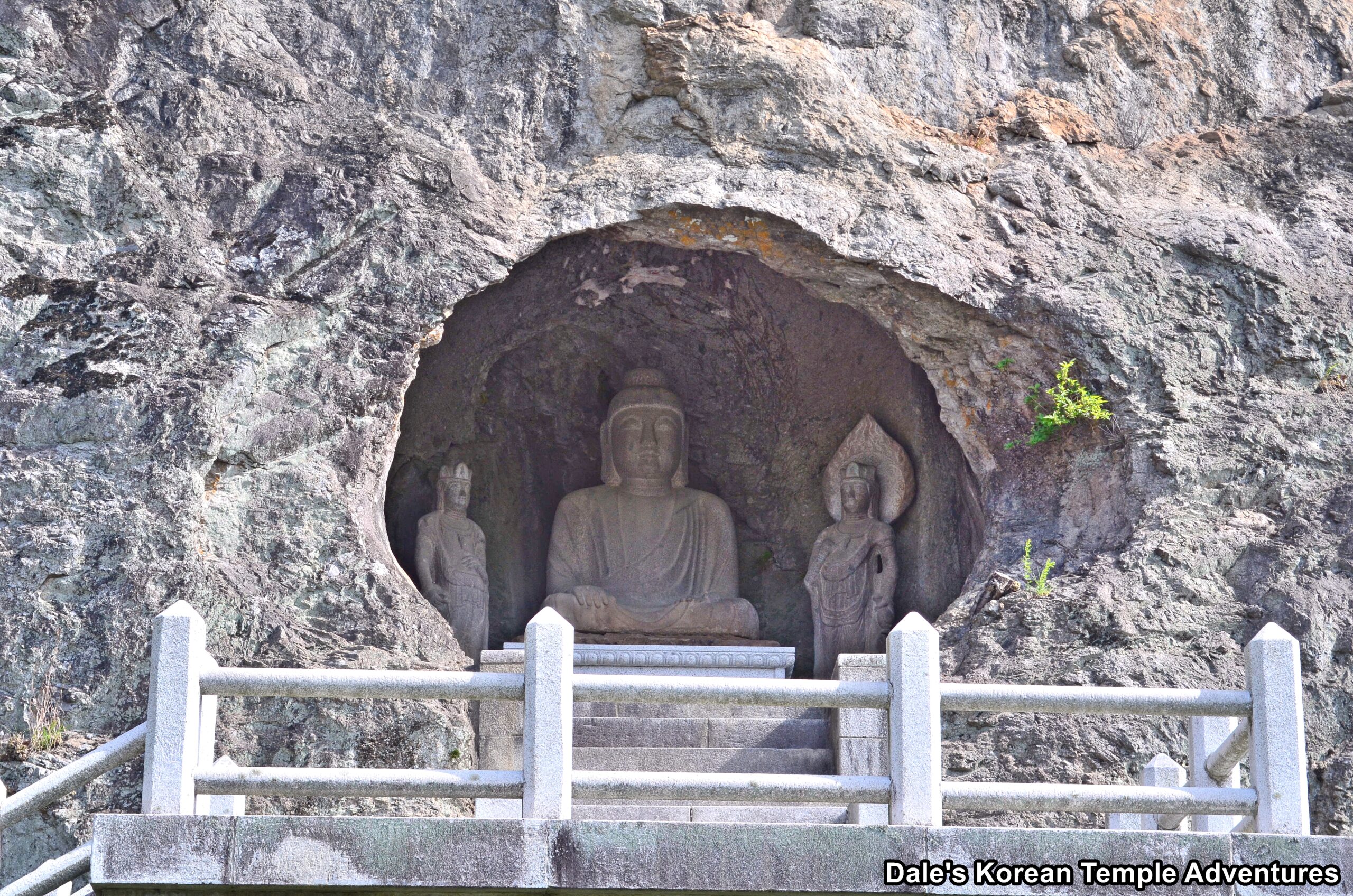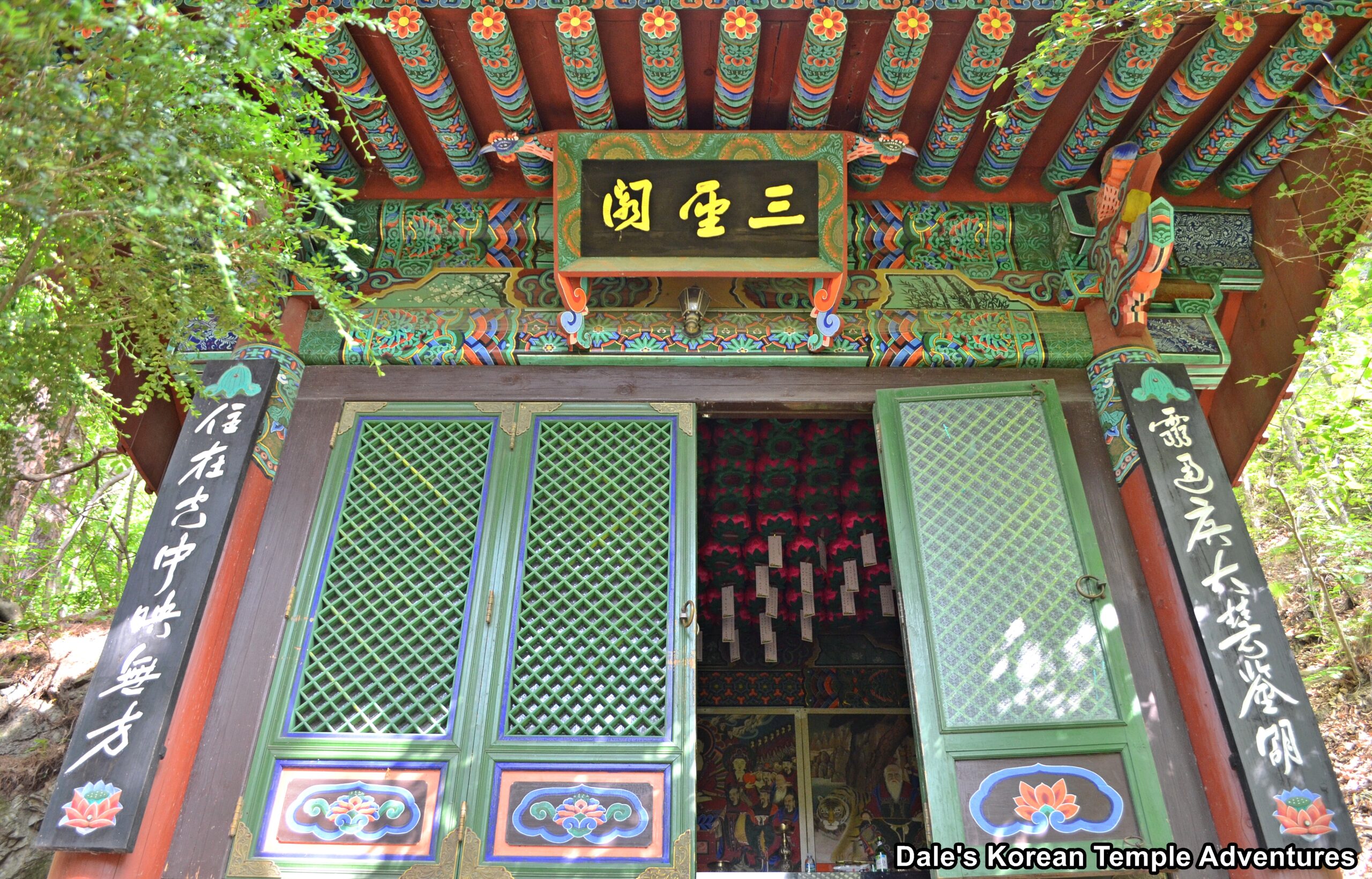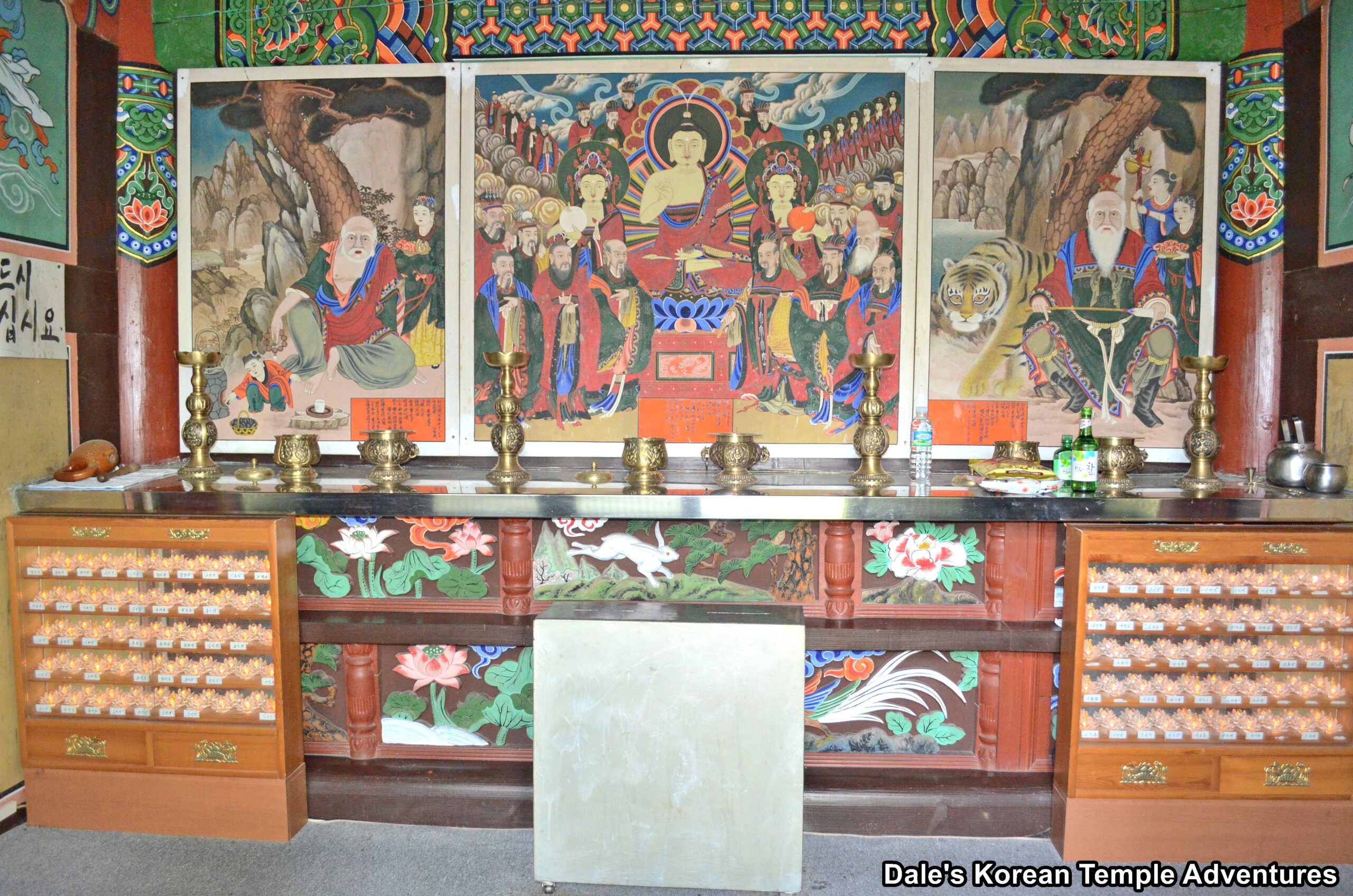Gunwi Grotto (2nd Seokguram) – 군위 석굴 (제2 석굴암) (Gunwi, Gyeongsangbuk-do)
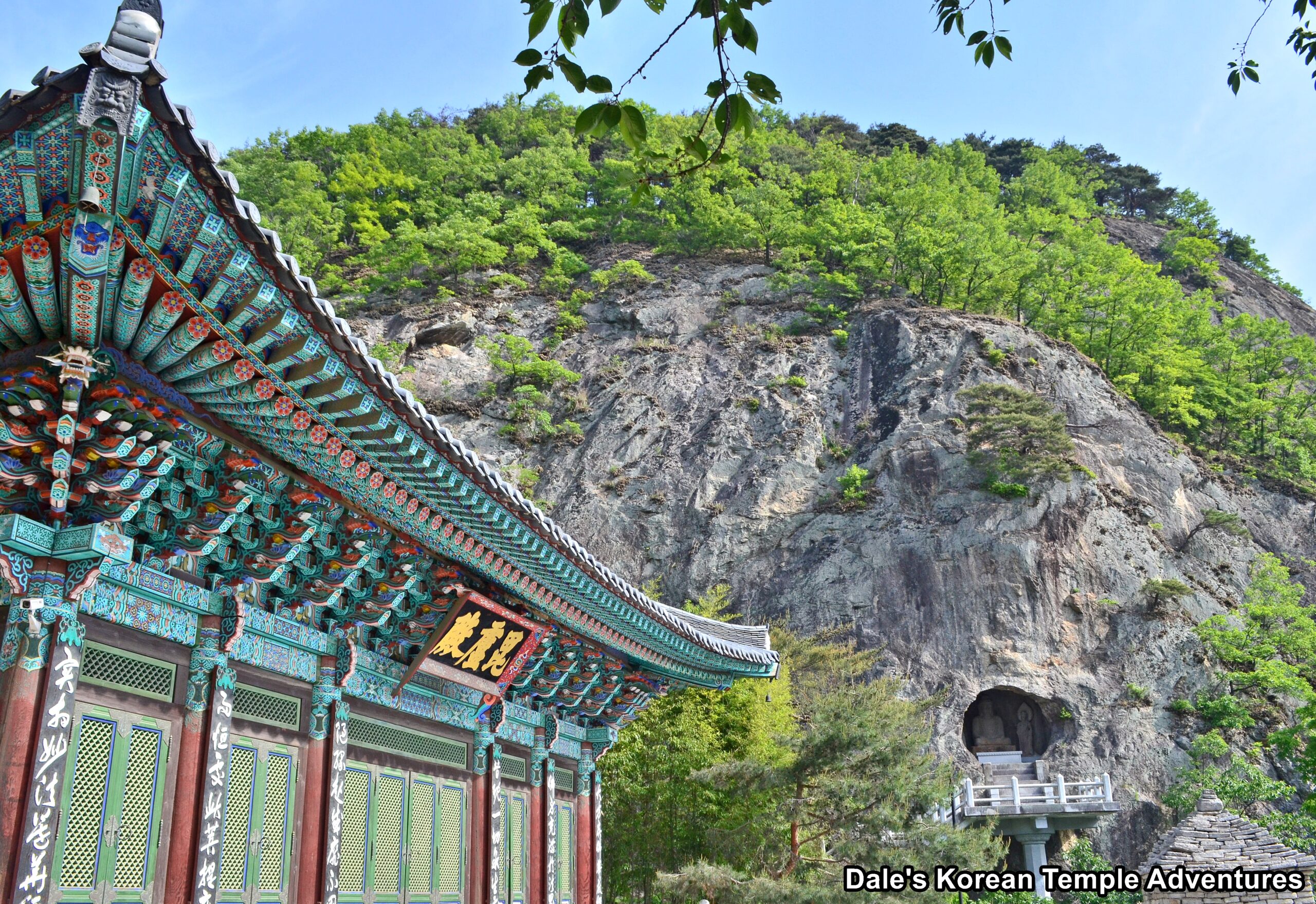
Grotto History
The Gunwi Grotto in Gunwi, Gyeongsangbuk-do goes by a few names that include the 2nd Seokguram Hermitage and the Samjonseokgul Cave. The Gunwi Grotto is located on the northern side of Mt. Palgongsan (1,192.3 m). The Buddhist temple founded on this site was believed to be first established during the early part of Unified Silla (676-935 A.D.). The stone cave is located twenty metres above ground, and the height of the cave is 4.25 metres tall. Additionally, the cave is 4.3 metres deep, and the floor of the cave is flat.
What makes the Gunwi Grotto so important is that it precedes the founding of the renowned Seokguram Grotto by a half a century. While not as sophisticated, it gives a glimpse into the evolution of cave shrines on the Korean peninsula. Housed inside the Gunwi Grotto are a triad of statues that date back to about 700 A.D. The triad consists of a central image of Amita-bul (The Buddha of the Western Paradise) which stands 2.88 metres in height. Amita-bul sits in a cross-legged position on top of a pedestal. Uniquely, Amita-bul displays a stern look unlike other Buddha statues from the same time period. Typically, Buddhas from this time period display a friendly smile. The mudra (ritualized hand gesture), or “suin” in Korean, that Amita-bul is showing with his right hand on his right knee and with his fingers turned downwards, shows that he is attempting to expel evil.
Joining the central image of Amita-bul inside the Gunwi Grotto are two Bodhisattvas. These Bodhisattvas are Gwanseeum-bosal (The Bodhisattva of Compassion) and Daesaeji-bosal (The Bodhisattva of Power and Wisdom for Amita-bul). Unlike Amita-bul, Gwanseeum-bosal and Daesaeji-bosal are standing. Each are wearing a crown with miniature a Buddha at the front. Also, they each hold a kundika, or ewer, with a ritual water sprinkler inside. They are also adorned with beaded necklaces, armlets, and long robes. Rather interestingly, the comparatively slender body that’s proportionately sculpted is influenced by the style of the Tang Dynasty (618–690, 705–907 A.D.) at this time.
This temple is additionally important because it provides an example of the transition found between early Korean Buddhist sculptures from the Three Kingdoms of Korea (57 B.C. – 668 A.D.) to that of the Unified Silla (668-935 A.D.). Also, the grotto is one of the first natural caves that was converted into a temple shrine. For all these reasons, the Gunwi Grotto is National Treasure #109, and it’s officially known as the Grotto of Amitabha Buddha Triad of Gunwi in English.
Grotto Layout
You first approach the temple grounds from the south. Besides the grotto, there is also a temple that lies out in front of it. This temple is known as the 2nd Seokguram Hermitage. Immediately, you’ll be welcomed to the grounds by a large visitors’ centre and study hall. When I visited, both seemed to be unused and unoccupied. After crossing a bridge with a small stream that flows underneath it, you’ll now be located just to the right of all the shrine halls at the temple.
The first of these temple structures is the Jong-ru Pavilion (Bell Pavilion). Housed inside the top-heavy Jong-ru Pavilion is a large Brahma Bell with the image of the grotto triad as a relief. Next to the Jong-ru Pavilion is a biseok dedicated to the life of a deceased monk from the temple. Further behind these structures are the long monks’ quarters that are off-limits to the general public. A little further along, and past the second biseok, is a stone statue dedicated to Birojana-bul (The Buddha of Cosmic Energy). This statue of Birojana-bul dates back to the 9th century.
Just past the bamboo grove and the 9th century statue of Birojana-bul is the Biro-jeon Hall, which is also known as the Daejeokgwang-jeon Hall. Out in front of the Biro-jeon Hall, on each of the front corners, are child-like statues dedicated to Munsu-bosal (The Bodhisattva of Wisdom) and Bohyeon-bosal (The Bodhisattva of Power). Surrounding the exterior walls of the Biro-jeon Hall are a masterful collection of Shimu-do (Ox-Herding Murals). Stepping inside the Biro-jeon Hall, you’ll notice a large triad seated on the main altar. In the centre of the three is Birojana-bul. On the far left wall is a Shinjung Taenghwa (Guardian Mural). And the rest of the interior of the Biro-jeon Hall is filled with paintings dedicated to various Bodhisattvas like Gwanseeum-bosal (The Bodhisattva of Compassion), Munsu-bosal, and Bohyeon-bosal. Of note, and out in front of the Biro-jeon Hall, you’ll have passed by a rather odd-looking pagoda. This pagoda is called “Mojeon Seoktap” in Korean. This one-story pagoda made from white bricks dates back to Unified Silla (668-935 A.D.).
Just over the rooftop of the Biro-jeon Hall, you’ll notice a hole in the sheer mountain face. This opening is the Grotto of Amitabha Buddha Triad of Gunwi, which was mentioned above. Unfortunately, you can’t climb the stairs leading up to the grotto. However, you can still get a good look up at the triad resting inside the cave even at a distance.
To the left of the Grotto of Amitabha Buddha Triad of Gunwi, and up a forested pathway, is the temple’s Samseong-gak Hall. Inside this shaman shrine hall are three rather ordinary paintings dedicated to Chilseong (The Seven Stars), Sanshin (The Mountain Spirit), and Dokseong (The Lonely Saint).
How To Get There
To get to the Gunwi Grotto, you’ll first need to get to the Gunwi Bus Terminal. You’ll then need to board a bus bound for Mt. Palgongsan. Just make sure with the bus driver that the bus goes by the grotto. Buses from the terminal start at 8:25 a.m. and end at 7:10 p.m.
Overall Rating: 7.5/10
The temple is a bit of a tough one to rate. It doesn’t have all that many temple shrine halls, but what it does have are pretty special. The obvious highlight to the temple is the historic Gunwi Grotto that also just so happens to be a National Treasure; however, you can only see it at some distance. Either way, if you do get the opportunity to visit Gunwi Grotto, you should. Alongside the grotto, you can see the beautiful interior of the Biro-jeon Hall, the surprisingly old stone artifacts strewn about the temple grounds like the statue of Birojana-bul and the one-story white brick pagoda. If you go, you won’t be disappointed.
